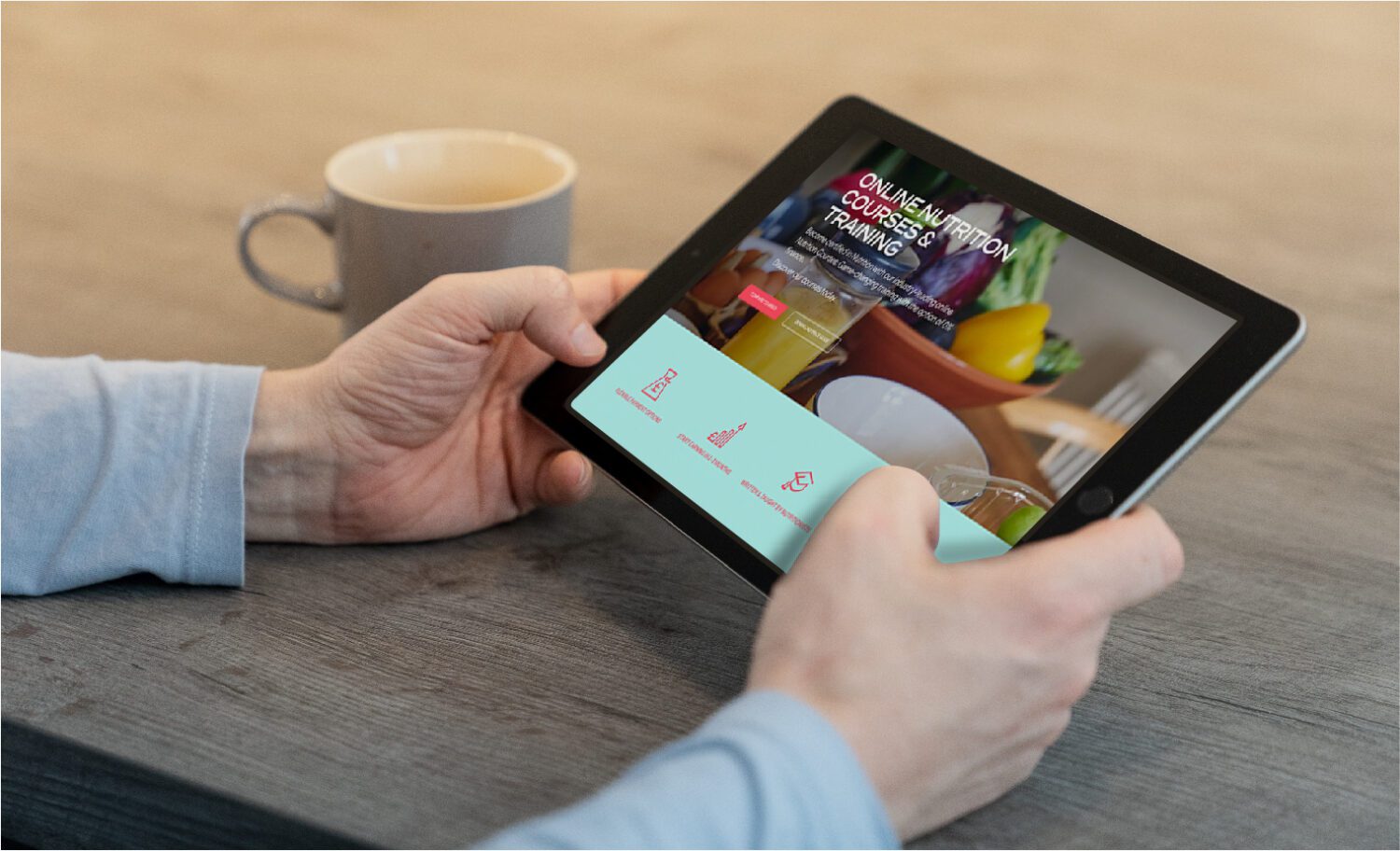



Are you a fitness professional and want to learn how to start a fitness blog? Then you’ll find this guide useful. For some of you, I understand that starting a blog means getting out of your comfort zone. But no need to worry.
At Future Fit, we have a team of professional bloggers and specialist fitness trainers, so we have put our resources together and want to show you the simplest way of starting a blog.
From the individuals starting their fitness journey to seasoned athletes, each has unique requirements and goals.
Delivering content that aligns with your audience’s preferences not only garners loyalty but also cements your blog as a reliable resource. With specific age groups, for example, adapting your messaging and topics to reflect the concerns and vernacular of those demographics ensures relevance and connection.
Clarity in understanding the interplay of demographics and psychographics enriches the content creation process.
The former provides insight into the ‘who’ – the quantifiable attributes of your audience such as age, gender, and location.
Conversely, psychographics delves into the ‘why’ – the intrinsic motivations, attitudes, and values that propel your audience towards their fitness goals.
Analyze feedback from audience interactions to perpetually refine your understanding. Surveys, comments, and social media engagement offers rich insights into audience preferences guiding your content to grow alongside your readers’ evolving needs.

Embarking on the fitness blogging journey sparks the decision to select a platform that will not only showcase your content but elevate it. With myriad options available, understanding the nuances of each platform allows you to meticulously craft your online presence.
Ponder your blogging ambitions alongside proficient ease when selecting a platform. A blog bustling with intricate functionalities will lean towards Wix. On the other hand, a vision aligned with simpleness and design symmetry might find its match in Squarespace.
Invest time exploring each platform’s offers, align them with your objectives, and prepare to launch into the health and fitness blogging world with confidence.
Choosing a domain name and selecting a web hosting service is pivotal to establishing a successful fitness blog. These steps set the stage for your blog’s online presence.
Your domain name serves as your digital address; it needs to reflect your brand and make a lasting impression. A well-chosen domain encapsulates your blog’s essence and is easy for users to remember. When devising a domain name, incorporate terms related to fitness that resonate with your audience, adding credibility and relevance to your blog.
Examples of fitness blog domain names:
Finding the right domain demands creativity and a strategic approach. Employ keywords that convey the unique angle of your fitness blog. Opt for brevity and ease of spelling to aid in recall. Avoid numbers and hyphens, as these can lead to confusion.
Explore variations, and use online tools to check availability. Once you’ve decided on a name, secure it quickly before someone else does.
Web hosting is the service that makes your blog accessible on the internet. As a fitness professional, contemplate a hosting provider that offers a blend of reliability, customer support, and scalability. Different hosting services cater to different needs-shared hosting might be economical for new bloggers, while a virtual private server (VPS) can accommodate a growing audience.
Consider bandwidth, storage space, and uptime guarantees. Analyze hosting packages that align with the size and projected growth of your fitness blog.
Remember, your choice in domain name and hosting has significant repercussions for your blog’s identity and operational stability. Tread carefully, ensuring each choice aligns with your long-term vision for your fitness blog.
A fitness blog should guide visitors intuitively through the wealth of information available. At the heart of this experience is the navigation bar, effortlessly leading readers to categories such as workouts, nutrition advice, and wellness tips.
A well-structured sidebar serves as the cornerstone of accessibility, offering quick links to popular posts, recent comments, and a call to subscribe to your newsletter. Combine these structural aspects to invite exploration and repeat visits.
Branding infuses your blog with distinct personality. Consistent use of brand colors and logo placement fosters immediate recognition and professional appeal. When readers spot your chosen palette and logo, they’ll associate it with the credible and valuable fitness guidance you offer. Integrate these elements across every page to create a cohesive, memorable brand identity.
Imagine crafting content that resonates deeply with your audience’s fitness journey. Start by diving into articles that illuminate the path to better health, sprinkle in transformative tips, and construct comprehensive training guides that followers will rely on.
These are the keystones of a valuable fitness content portfolio and can establish your blog as an authoritative source in the fitness sphere.
Diversification of topics keeps your blog fresh and engaging. A blend of exercise routines, nutrition advice, and personal experiences creates a rich tapestry that entices readers to return. Cater to the runner chasing a new personal best, the novice seeking a nutrition overhaul, and the yoga enthusiast looking to deepen their practice. Each article should speak to a facet of your audience’s diverse interests.
Examine the pulse of your blog’s content with a critical eye. Consistency and quality are the heartbeats that sustain long-term engagement. Frequent updates display commitment to your audience, but the quality of each post must not suffer. Minus quantity, there’s a risk of dilution, yet prioritize quality, and your blog’s credibility thrives.
Optimizing your fitness blog for search engines begins with astute keyword research. Selecting the right keywords will not only help define your blog’s content but also ensure that your target audience finds you.
When crafting posts on fitness topics, incorporate high-ranking keywords naturally. Overusing them, sometimes referred to as ‘keyword stuffing’, can harm your blog’s search engine rankings. Everything starts with a professional keywords research, to find out what people are looking for, what are the volumes and how to craft your content calendar.
Mastering on-page SEO requires a focus on elements such as titles, headings, content quality, page loading speed, and mobile responsiveness. Each page or post should target a primary keyword along with relevant secondary keywords.
Off-page SEO, conversely, relies heavily on developing external links and a robust social media presence. These factors collectively signal relevance and authority to search engines, potentially improving your blog’s position in search results.
Building links within the fitness community can significantly boost your blog’s authority. Engage with other fitness bloggers and websites to create valuable backlinks.
Guest posting, sharing insightful comments on relevant forums, and collaborating on mutually beneficial campaigns are effective strategies. Remember, the quality of links is paramount; focus on reputable sources rather than pursuing quantity alone.
Adept use of different SEO techniques will elevate your fitness blog’s rank amidst the vast digital landscape. Engage your audience with compelling content, and embed SEO practices into every aspect of your blogging journey for lasting impact.
When you weave social media into the tapestry of your fitness blog promotion, selective platform choice ensures you engage the right audience. Each platform attracts distinct user demographics and behaviours; Instagram and YouTube are visual-heavy and suited for sharing workouts and diet tips, while Twitter excels in quick, conversational engagement, and LinkedIn can bolster your professional credibility. Thrive where your target readers spend their time.
Facebook’s extensive user base offers broad reach but requires savvy targeting and engaging content to cut through the noise. Pinterest might be a haven for fitness tips and healthy recipes, beneficial for driving traffic with visually rich infographics and tutorials. Assess each platform’s strengths and align them with your blog’s content and audience preferences.
Consistency in social media posts nurtures audience engagement and growth. Strategy beats spontaneity; hence, a content calendar marks your path to regular posting. Varied post types – images, videos, stories, and live sessions – appeal to diverse preferences while maintaining a cohesive thread woven from your blog’s fabric.
Dig into cross-promotion by teasing blog content on social media, inspiring followers to delve into your detailed blog posts for more. Employ clickable links in bios, stories, or posts to facilitate seamless reader transition from social media to blog. Utilize social sharing buttons on your blog to encourage readers to share your content, fueling organic reach. The symbiosis between your fitness blog and social media outreach will anchor the visibility and growth of your online presence.
Diversifying income streams can turn a fitness blog from a passion project into a profitable venture. Bloggers commonly explore advertising revenue, affiliate marketing, and the sale of products or services. Effective monetization requires a strategic approach to sustain long-term growth.
Joining an ad network such as Google AdSense enables banners and display advertisements on a fitness blog. The income here depends on traffic volume; more visitors translate to increased ad revenue. Direct ad sales or sponsored posts offer a premium over ad networks, allowing bloggers to partner with brands their audience values.
Fitness bloggers often affiliate with companies by promoting products or services and earn a commission for each sale made through a unique referral link. Platforms like Amazon Associates or health and fitness-specific affiliate programs serve as a medium for such partnerships.
Creating and selling original products, such as workout plans, nutrition guides, or fitness e-books, leverages a blogger’s expertise. Services like personal coaching, memberships, or online courses also provide value to readers while generating income.
Maintain transparency with the audience by disclosing affiliations and sponsored content; this practice builds trust and ensures compliance with advertising standards.
While monetization is a goal, preserving the integrity of content is paramount. Authentic engagement and high-quality content foster an environment where monetization naturally aligns with the audience’s interests and the blog’s ethos.